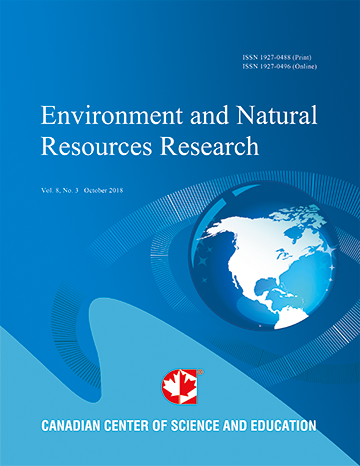A Comparative Assessment of the Effect of Climatic Variations on the Crops of the Cameroon Development Corporation (CDC): Adaptation Options
- Jude Kimengsi
- Nkwainguh Muluh
Abstract
It is a truism that the Cameroon Development Corporation (CDC), through the establishment of her plantations, is a major development partner in Cameroon; it is the second largest employer after the government. This corporation principally cultivates three tradables, they include, rubber, oil palm and banana. The large scale cultivation of these tradables contributes significantly to Cameroon’s agricultural exports. However, it is observed that variations in climate have an effect on the output of these tradables. This study attempts a comparative assessment of the effects of climatic variations on CDC’s rubber, oil palm and banana; it identifies the extent to which the observed 16 year fluctuations in rainfall and temperature have affected the output of the three tradables. Climatic data, which constituted essentially of rainfall and temperature, was obtained for a 16 year period (1995-2010) in each of the plantation sites while the output for these three tradables were also obtained from the CDC Group Rubber, Oil palm and Banana Departments. Trend analyses were done to establish variations in temperature and rainfall while the error correction model was employed to determine the impact of such variations on the output of the three tradables. In order to ensure the robustness of the results, the Phillips - Perron unit root test statistics was employed to test for stationarity and the results for each of the variables used in the error correction model equations for the different crops confirm that all the variables were stationary after the first differencing. In addition, the Durbin Watson test for the presence of serial correlation and the semi-robust standard error was used to take care of potential problems of heteroskedasticity. It was established that there is an observed variation in climate and such variations have a profound effect on the three tradables, although the magnitudes vary. The production trend for all the tradables show an average decline in yields from 1.6 tons to 1 ton per hectare for rubber, 7.5 to 5.1 tons per hectare for oil palm and 41.9 to 23 tons per hectare for banana between 1995 and 2010. Generally, the findings show that increasing temperature and declining rainfall have significant and varied effects on the outputs of these perennial crops of the CDC. In the circumstances therefore, the study recommends crop-specific adaptation measures which could be adopted by the CDC to reduce the effects of climatic variations on these tradables.
- Full Text:
 PDF
PDF
- DOI:10.5539/enrr.v3n1p144
Journal Metrics
Google-based Impact Factor (2016): 6.22
h-index (November 2017): 12
i10-index (November 2017): 19
h5-index (November 2017): 11
h5-median (November 2017): 12
Index
Contact
- Emily LinEditorial Assistant
- enrr@ccsenet.org
